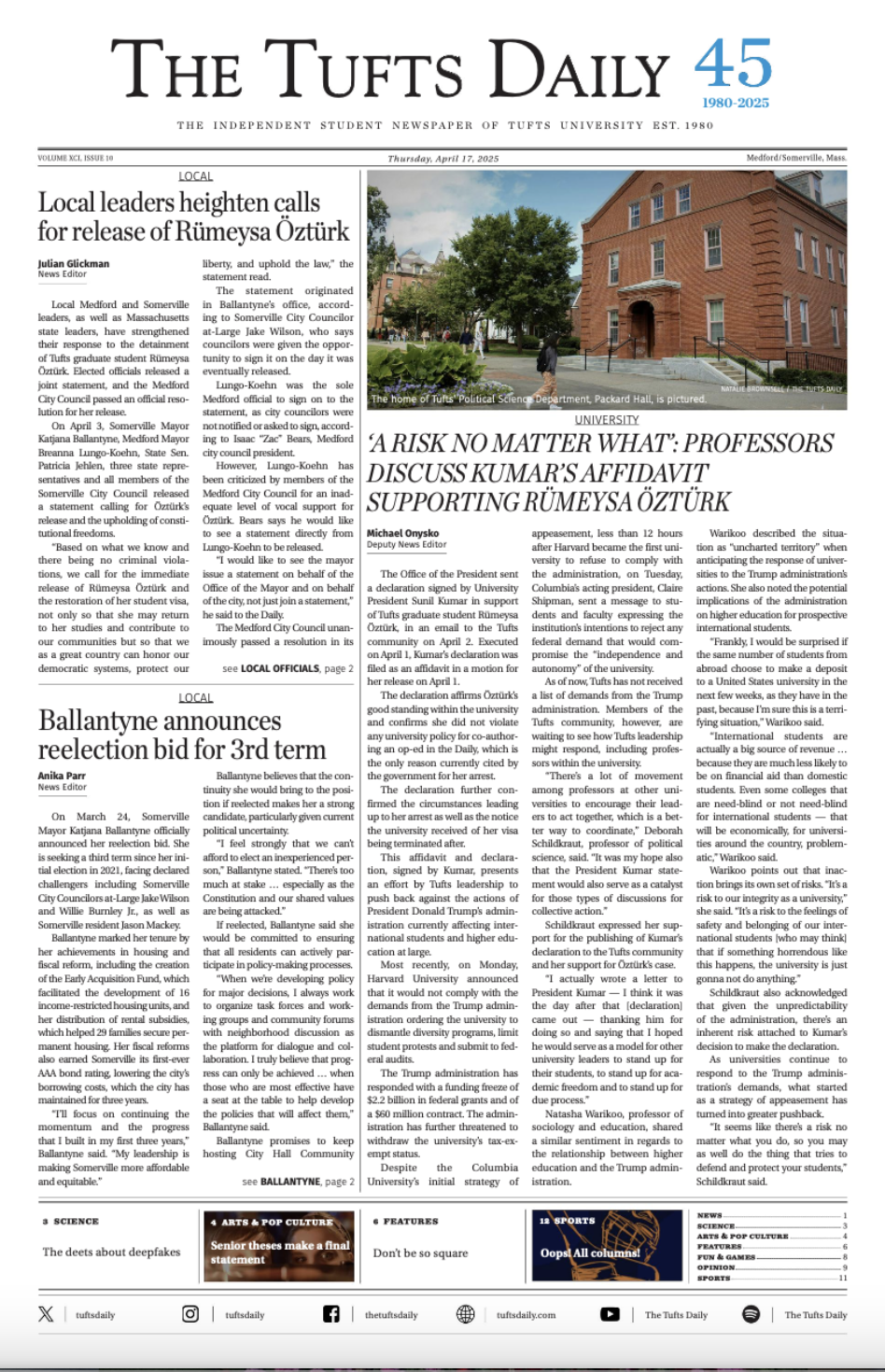It’s a normal day at The White House until the president, in a meeting with international diplomats, calls his wife a “c—t.” After controversy erupts, his chief of staff and press secretary are left to clean up the mess. This is the opening scene of “POTUS: Or, Behind Every Great Dumbass are Seven Women Trying to Keep Him Alive” a political farce that just wrapped up a month-long run at the SpeakEasy Stage Company in Boston. Written by playwright Selina Fillinger, the play follows seven women in the president’s inner circle as they navigate a day full of scandals that bring the country to the brink of crisis, combining over-the-top physical comedy with timely political commentary.
While the SpeakEasy show boasts none of the big stars or high-caliber revolving set pieces of the 2022 Broadway production, “POTUS” still packs a punch with a gifted all-female cast and creative team led by director Paula Plum. Although Fillinger’s script is heavy on vulgar humor and big slapstick moments, Plum’s direction keeps the story grounded throughout the chaos. The president himself is never seen onstage — instead, we’re introduced to the other women in his life, including Bernadette (Johanna Carlisle-Zepeda), the president’s drug-dealing sister who’s awaiting a pardon, and Chris (Catia), a young reporter seeking to turn the White House chaos into a news story. Crystin Gilmore gives a nuanced and hilarious performance as Margaret, the first lady, who wears a pantsuit with Crocs in an attempt to appear more “earthy,” while the president’s frazzled chief of staff Harriet (Lisa Yuen) and intense press secretary Jean (Laura Latreille) anchor the play as they attempt to respond to the president’s many scandals.
However, the best performances come from Marianna Bassham and Monique Ward Lonergan. Bassham plays Stephanie, the President’s put-upon receptionist who tries to make up for her lack of self-confidence with “power stances” and a motivational Spotify playlist called “bitch beats.” Bassham has a field day with physical comedy in act two when she accidentally takes some of Bernadette’s drugs and sends the others on a wild goose chase around The White House. Lonergan plays Dusty, a young woman from small-town Iowa who’s pregnant with the president’s baby. Lonergan takes a role that could be played as a one-dimensional stereotype and injects it with enthusiasm, empathy and genuine humor, making Dusty an instantly likable character.
Fillinger’s script is ambitious — telling a broad story about politics, gender dynamics and a powerful unseen president that may bring several real-life leaders to mind, but also a specific story of chaos in The White House that involves intense physical comedy, fast-paced dialogue and a never-ending run of dirty jokes. Even when the storylines start to pile up in act two, Plum’s direction and the cast’s performances keep the show on track. Additionally, Jenna McFarland Lord’s set design deserves a mention for its colorful striped walls and slanted doors that immediately transport audiences into the chaotic, off-kilter world of the play.
The attention to detail in Rebecca Glick’s costume design serves as both a storytelling device and a nod to the reality of being a woman in the workplace, highlighting the most important characteristics of each woman in subtle ways. Harriet aims for a more presidential look with her short hair and straight-legged trousers, but she ends up looking like “if Elton John did Civil War reenactments.” Dusty’s simple floral dress and jean jacket give her a more youthful look that emphasizes her naiveté. Margaret’s Crocs (in sports mode) are worn only because the general public refuses to take her seriously in heels. Chris’ ever-present breast milk stains on her shirt show how her job as a mother bleeds into her job as a journalist. Even Bernadette’s combat boots and duffle bag full of pads and weapons show that she is ready for anything.
Individually, each actor has their strengths, but when the full ensemble is onstage together, the show is at its peak. The final scene of act one is the best example of this group dynamic. As the full ensemble erupts into a fight, they weave throughout the stage, dodging flying fists and getting choked by breast pump cords. They bring the words on the page to life with their constant banter, not missing a single beat and keeping audiences focused on the action the whole time.
At its core, this show is about all the work women do at home and in the workplace to keep the world moving. Mothers in the workforce juggle multiple jobs, as seen with Chris, who breastfeeds and calls her babysitter while she conducts an interview. These women are often judged by their appearances, and not their talents or accomplishments — even Harriet unconsciously feels the need to appear more masculine in order to have a shot at the presidency.
And yet, the moves these women make to get by in the male-dominated workforce are still not enough for the rest of the world. No matter how hard they try, they’ll never be enough to earn the respect men are immediately given. And there’s a larger question at stake, repeated several times throughout the show: Why isn’t one of these women president? As “POTUS” so clearly points out, the world is too afraid of what women would do with their power.






